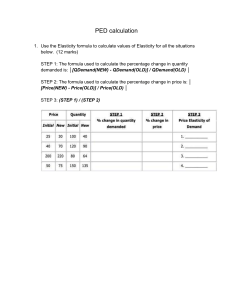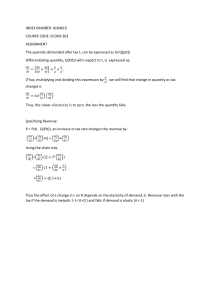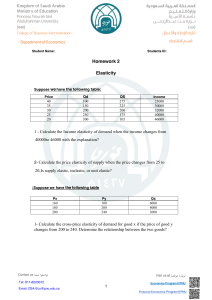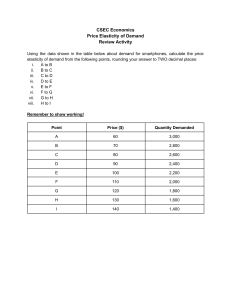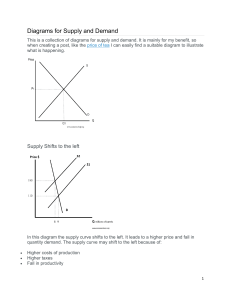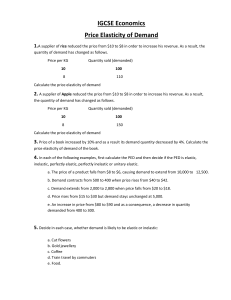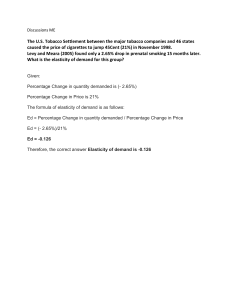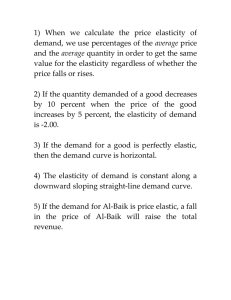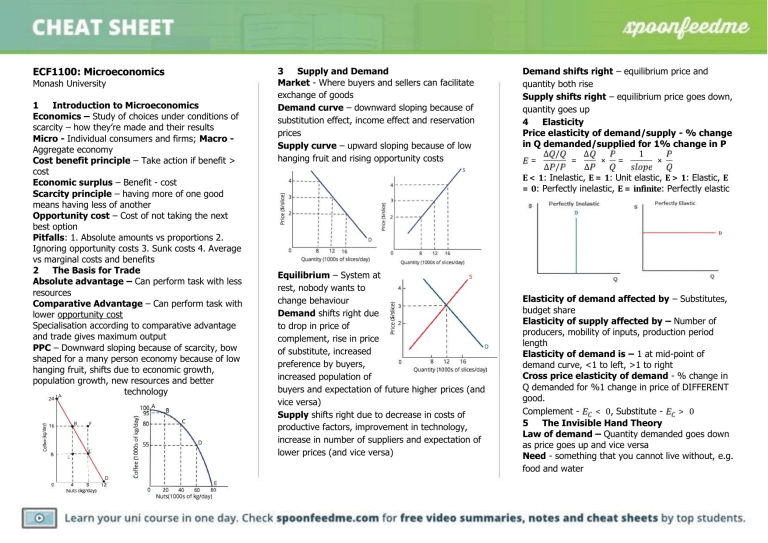
ECF1100: Microeconomics Monash University 1 Introduction to Microeconomics Economics – Study of choices under conditions of scarcity – how they’re made and their results Micro - Individual consumers and firms; Macro Aggregate economy Cost benefit principle – Take action if benefit > cost Economic surplus – Benefit - cost Scarcity principle – having more of one good means having less of another Opportunity cost – Cost of not taking the next best option Pitfalls: 1. Absolute amounts vs proportions 2. Ignoring opportunity costs 3. Sunk costs 4. Average vs marginal costs and benefits 2 The Basis for Trade Absolute advantage – Can perform task with less resources Comparative Advantage – Can perform task with lower opportunity cost Specialisation according to comparative advantage and trade gives maximum output PPC – Downward sloping because of scarcity, bow shaped for a many person economy because of low hanging fruit, shifts due to economic growth, population growth, new resources and better technology 3 Supply and Demand Market - Where buyers and sellers can facilitate exchange of goods Demand curve – downward sloping because of substitution effect, income effect and reservation prices Supply curve – upward sloping because of low hanging fruit and rising opportunity costs Equilibrium – System at rest, nobody wants to change behaviour Demand shifts right due to drop in price of complement, rise in price of substitute, increased preference by buyers, increased population of buyers and expectation of future higher prices (and vice versa) Supply shifts right due to decrease in costs of productive factors, improvement in technology, increase in number of suppliers and expectation of lower prices (and vice versa) Demand shifts right – equilibrium price and quantity both rise Supply shifts right – equilibrium price goes down, quantity goes up 4 Elasticity Price elasticity of demand/supply - % change in Q demanded/supplied for 1% change in P ∆ / ∆ 1 = × = × ∆ / ∆ : Inelastic, : Unit elastic, : Elastic, : Perfectly inelastic, : Perfectly elastic Elasticity of demand affected by – Substitutes, budget share Elasticity of supply affected by – Number of producers, mobility of inputs, production period length Elasticity of demand is – 1 at mid-point of demand curve, <1 to left, >1 to right Cross price elasticity of demand - % change in Q demanded for %1 change in price of DIFFERENT good. Complement < 0, Substitute > 0 5 The Invisible Hand Theory Law of demand – Quantity demanded goes down as price goes up and vice versa Need - something that you cannot live without, e.g. food and water CHEAT SHEET Sign up to get this cheatsheet completely free as well as view more videos and notes. Learn your uni course in one day. Check spoonfeedme.com for free video summaries, notes and cheat sheets by top students.
